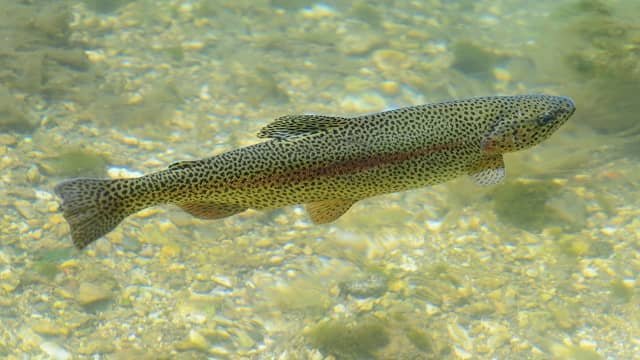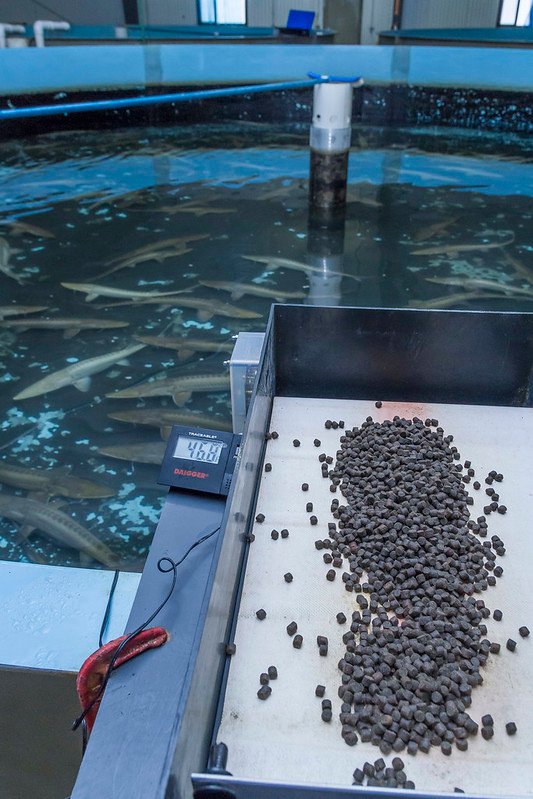
The increase in the number and diversity of raw materials allows for the development of various alternative feed formulations. However, testing all these options “in vivo” requires the use of a large number of animals and involves a lot of time and money.
In this regard, the development of an artificial intestine could minimize the use of “in vivo” assays, which are currently necessary to test aquaculture feeds.
A team of scientists from the University of Milan, the IRCCS San Raffaele Scientific Institute, the National Center for Mariculture, the Norwegian University of Life Sciences (NMBU), and Skretting Aquaculture Research Centre combined an “in vitro” digestion protocol of commercially relevant extruded aquaculture feeds with the exposure of intestinal epithelial cells to the extracted bioaccessible fraction (BAF).
Artificial intestine of rainbow trout
Previously, the scientists derived and characterized two novel cell lines from the proximal (RTpi-MI) and distal (RTdi-MI) intestine of rainbow trout (Oncorhynchus mykiss), demonstrating that the two cell lines retain the main properties of the intestinal tracts from which they originate.
“We used these cells to establish a functional intestinal barrier on a permeable membrane support to investigate the digestion and absorption of amino acids from fish diets,” reported the scientists.
They exposed the functional monolayers of RTdiMI and RTpiMI cells to the bioaccessible fraction extracted from a commercially available fish feed.
Optimal cell seeding density
The scientists investigated how long it takes for the RTpiMI and RTdiMI lines to form a functional epithelial barrier. They tested seeding densities of 120,000, 250,000, 500,000, and 900,000 cells/m2.
“The results show that 250,000 cells/cm2 represent the optimal seeding density to obtain an effective epithelial barrier formed by a monolayer of cells with a shorter culture time,” highlighted the researchers.
Stay Always Informed
Join our communities to instantly receive the most important news, reports, and analysis from the aquaculture industry.
Exposure to the Bioaccessible Fraction (BAF)
According to the researchers, “the main objective of our experiments was to develop a system that would allow us to profile the transit of amino acids through a reconstructed intestinal epithelial barrier after exposure to a physiologically relevant BAF from a commercially significant fish feed.”
According to the study’s results, the scientists achieved the identification of exposure and extraction conditions of the bioaccessible fraction (BAF) that allow for the accurate quantification of amino acids using high-resolution mass spectrometry.
“A BAF concentration of up to 50% for a maximum of 24 hours had no negative effects on the morphology and function of the epithelial barrier,” they reported. They also indicated that the differences between the cell lines were no longer evident when a 50% BAF concentration was used, possibly due to transporter saturation.
According to the researchers, it is possible to determine the digestibility and bioavailability of amino acids under all experimental conditions (with and without BSA, at 25% and 50% dilution) and at all time points (0, 6, and 24 hours).
Conclusion
This is the first assay to develop a platform that combines the “in vitro” digestion of pelleted feeds with the exposure of intestinal epithelial cells to extract the bioaccessible fraction to determine the digestibility of amino acids and their bioavailability in fish simultaneously.
“The results demonstrate that the procedure we developed allows for the quantification of individual amino acids crossing the intestinal wall. This new platform will now be used to evaluate and select new ingredients/feed formulations,” conclude the researchers.
They also indicate that the BAF concentration, the medium used for dilution, the length of exposure, and the different epithelial cell lines can influence the results and, therefore, should be selected according to the ultimate goal of the experiment.
The study was funded by the European Union’s Horizon 2020 research and innovation program.
Reference (open access)
Pasquariello, R.; Pavlovic, R.; Chacon, M.A.; Camin, F.; Verdile, N.; Løkka, G.; Panseri, S.; Faustini, M.; Tandler, A.; Peggs, D.; et al. Development of a Rainbow Trout (Oncorhynchus mykiss) Intestinal In Vitro Platform for Profiling Amino Acid Digestion and Absorption of a Complete Diet. Animals 2023, 13, 2278. https://doi.org/10.3390/ani13142278
Editor at the digital magazine AquaHoy. He holds a degree in Aquaculture Biology from the National University of Santa (UNS) and a Master’s degree in Science and Innovation Management from the Polytechnic University of Valencia, with postgraduate diplomas in Business Innovation and Innovation Management. He possesses extensive experience in the aquaculture and fisheries sector, having led the Fisheries Innovation Unit of the National Program for Innovation in Fisheries and Aquaculture (PNIPA). He has served as a senior consultant in technology watch, an innovation project formulator and advisor, and a lecturer at UNS. He is a member of the Peruvian College of Biologists and was recognized by the World Aquaculture Society (WAS) in 2016 for his contribution to aquaculture.




